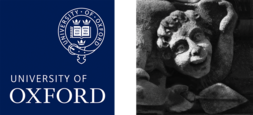A Plio-Pleistocene to Holocene faunal sequence has been recovered from four carefully excavated caves in the Bubing Basin, adjacent to the larger Bose Basin of South China. The caves vary in elevation; we suggest that the higher caves were formed and filled with sediments prior to the lower caves. The highest deposits, which are from Mohui Cave, contain hominoid teeth and other fossilized remains of mammalian taxa most similar to late Pliocene and early Pleistocene faunas. Wuyun Cave ( approximately 50m lower in elevation than Mohui) contains a late middle Pleistocene fauna, which is supported by U-series age constraints from 350 to 200ka. Lower Pubu Cave ( approximately 23m below Wuyun) is assigned to the late Pleistocene, while the Cunkong Cave (the lowest, approximately 2m lower elevation than Lower Pubu) preserves a Holocene fauna. The four faunal assemblages indicate species-level changes in Ailuropoda, Stegodon, and Sus, the appearance of Elephas, the local disappearance of Stegodon, and the migration of Equus hemionus to South China. These initial results of our work call into question the continued value of the Stegodon/Ailuropoda Fauna, a category long used to characterize the Pleistocene faunas of South China. Excavation of karstic caves of varying elevation within the basins of South China holds promise for defining local sequences of mammalian fossils that can be used to investigate faunal variations related to climate change, biogeographic events, and evolutionary change over the past two million years. Stable isotopic analysis of a small sample of mammalian teeth from Bubing Basin caves is consistent with 100% C(3) vegetation in the Bubing/Bose region, with certain delta(13)C values consistent with a canopied woodland or forest. A preliminary assessment of the hominoid teeth indicates the presence of diverse molar and premolar morphologies including dental remains of Gigantopithecus blacki and a sample with similarities to the teeth reported from Longgupo.
Tooth
,Animals
,Mammals
,Hominidae
,Carbon Isotopes
,Fossils
,China



